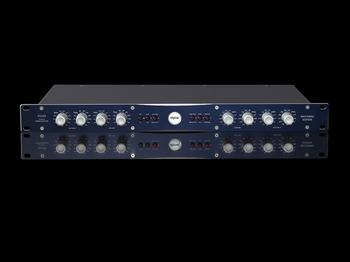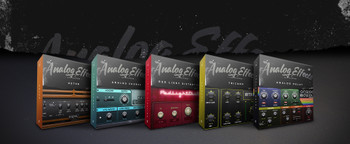Description
Mercury
Mastering D/A Converter
Mercury is the first mastering DA-converter in 120V technology. It offers seven digital stereo input sources, all of which can be synchronized with each other or with a word clock. The additional variable output qualifies Mercury as a monitor controller.
Seven Digital Sources
Mercury provides connections for a total of seven digital stereo input sources.
For each digital source there is a dedicated and illuminated tactile switch for quick selection and quick comparison.
The detected sample rate is shown in the display.
One USB input and two coaxial, two optical and two AES/EBU inputs are available. AES input 2 also supports Dual-Wire (DW) mode.
Sync
The display shows the synchronization status and the detected sampling rate. Any source except USB can be synchronized to another source or to an external Word Clock.
If the sync “Source” is selected in the display, each source uses its own sync code embedded in the signal.
O dBfs
Holding the Sync button for more than two seconds Mercury will change to the 0dBfs display.
Mercury offers all reference levels in dBu corresponding to a 0 dBfs (full scale) digital signal: +14, +15, +16, +17, +18, +20, +22 and +24 dBu
Fix And Variable Outputs
Fix & Var
The FIX OUT is an analog balanced stereo output which can be calibrated to all common reference levels (see 0 dBfs).
Mercury offers a variable analog balanced stereo output. This output provides the same signal as the FIX OUT, but the level is continuously adjustable. Thus Mercury can also be used as a state-of-the-art monitor controller.
Variable Output
This analog potentiometer is used to control the level of the VAR OUT output. We use the ALPS RK27 “Big Blue” potentiometer with a nice “spoon in honey” feel and excellent channel tracking. So not only the auditory but also the haptic experience of volume control is at the highest level.
The 120V technology
The 120V technology is our reference technology. The 120V technology is unique in the world. It operates at a DC voltage of 120 volts. This is four times that of IC-based semiconductor op-amps.
The highest possible audio quality requires the highest possible audio operating voltage.
The 120V technology works with +/-60 V. To be able to handle such a high voltage, we have developed special proprietary operational amplifiers that can operate with a DC voltage of +/-60 V: the SPL 120V SUPRA operational amplifiers.
This high voltage would destroy conventional components and operational amplifiers.
By the way, the “120V” in the name of the technology has nothing to do with the local mains voltage from the mains power socket. This is about the operating voltage inside the device with which the audio signals are processed.
The mains voltage from the mains power socket is transformed to the required secondary voltage in the device’s internal linear power supply with toroidal transformer. Rectifiers convert this AC voltage into DC voltage required in the audio device.
The idea for SPL 120V technology and the SUPRA operational amplifier based on this technology were developed in the 1990s by SPL founder and chief developer Wolfgang Neumann.
With the goal of building the best mastering console ever, this basic technological philosophy then took shape for the first time – thus the SPL MMC1 Mastering Console for Galaxy Studios saw the light of day in 2000.
The outstanding sonic and technical features quickly got around in the scene – so further orders were not long in coming.
Besides the MMC 1, another legendary product with 120V technology was created with the PQ, the “King of Parametric Equalizers”.
Since that time, 120V technology has been the foundation for all SPL premium products. Meanwhile, not only for mastering applications, but also for the, studio or hifi use.
Specifications
Analog inputs & output; XLR (balanced)
- Maximum input & output gain 32.5 dBu
- Input impedance 20 kΩ
- Output impedance 75 Ω
- Common mode rejection -82 dBu
- Frequency range (-3 dB) 4 Hz – 300 kHz
- Crosstalk (1 kHz) -108 dBu
- THD (0 dBu, 1 kHz) 0.000992 %
- Noise (A-weighted) -102.5 dBu
- Dynamic range 135 dB
Digital Inputs, DAC768
- AES/EBU (XLR), PCM sample rates 44.1/48/88.2/96/176.4/192 kHz
- Coaxial SPDIF (Cinch), PCM sample rates 44.1/48/88.2/96/176.4/192 kHz
- Optisch SPDIF (Toslink F06), PCM sample rates 44.1/48/88.2/96/with Glass fibre <1 m: 176.4/192 kHz
- USB (B), PCM sample rates 44.1/48/88.2/96/176.4/192/352.8/384/705.6/768 kHz
- USB (B), DSD over PCM (DoP), sample rates 2.8 (DSD64), 5.6 (DSD128), 11.2 (DSD256) MHz
- 0 dBfs calibrated to 15 dBu
Internal Linear Power Supply with Shielded Toroidal Transformer
- Operating voltage for analog audio +/- 60 V
- Operating voltage for relays and LEDs + 12 V
- Operating voltage for DAC768 + 7 V, +3.3 V
Mains Power Supply
- Mains voltage (selectable, see fuse chamber) 230 V AC / 50; 115 V AC / 60 Hz
- Fuse for 230 V T 500 mA
- Fuse for 115 V T 1 A
- Power consumption max. 40 VA
- Stand-by power consumption < 0,3 W
Dimensions & Weight
- W x H x D (width x height x depth)
- 482 x 44 x 300 mm
- 19 x 1.73 x 11.8 inch
- Unit weight
- 4.55 kg
- 10 lbs
- Shipping weight (incl. packaging)
- 6.7 kg
- 14.77 lbs












